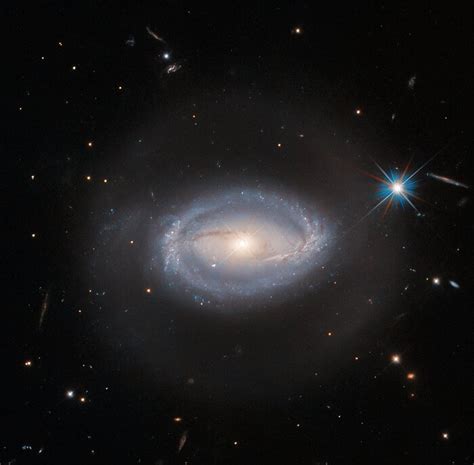Sometimes, the universe throws us a curveball, and this latest discovery does just that. Astronomers have identified a ring of galaxies spanning 1.3 billion light-years—yes, billion—across the sky. For perspective, that’s a size that mind-bogglingly surpasses anything we would expect to find. This substantial structure has caused both excitement and a bit of consternation among scientists, compelling them to re-evaluate their understanding of the universe’s grand design.
One insightful comparison came from a curious observer who related it to the ‘circles in the sky’ method, utilized to study the topological structure of the universe. This approach reminds us that the universe might be simpler or more intricate than we initially perceived. For those seeking more in-depth details, you can refer to geometric studies pertinent to the universe’s shape on this site.
Critics argue whether such patterns could arise incidentally out of the randomness of space. A noted comment observed that once in a while, random distributions will form shapes like circles due to mere statistical noise, much like seeing recognizable forms in cloud shapes. If these circles or other patterns are indeed random, why should this time be any different? Yet, the debate intensifies as some follow-up analyses imply that the structure’s statistical significance cannot be dismissed casually.
A popular counter-argument points out that the universe, brimming with approximately 2 trillion galaxies, does offer enough room for extraordinary alignments to emerge. But as another commenter highlighted, not all alignments signal genuine sky patterns. The chance of finding a ‘copy of Shakespeare’s play written in the stars’ is astronomical. Nevertheless, having both the ‘Big Ring’ and the ‘Giant Arc’ in the same sky region defies simple statistical randomness, suggesting some underlying interconnected mechanism.
Peeling back the layers further, some in the astrophysical community have explored explanations involving large-scale gravitational dynamics. For instance, gravitational lensing might create visual artifacts misinterpreted as actual structures. Others suggest more exotic scenarios, such as a controlled arrangement effected by an immensely advanced civilization, though this remains highly speculative and within the realms of science fiction.
A critical clue to demystifying this phenomenon lies in the tools and methodologies applied by scientists. Algorithms like the Convex Hull of Member Spheres (CHMS) shed light on density anomalies in the universe’s vast expanse. Several astronomers specializing in large-scale structures have noted the peculiar propensity for specific configurations like ‘galaxy filaments’ and ‘voids.’ The consistency and size of this galactic ring, visible at enormous distances, may unveil fundamental principles about matter distribution that align with or challenge existing cosmological models.
Continued investigation pivots on advanced statistical analysis and richer data from cutting-edge observatories. Teams are delving into related phenomena, using state-of-the-art equipment to refine measurements and validate findings. The discovery of the ‘Big Ring’ punctuates a thrilling chapter in the exploration of our cosmos, compelling us to look deeper and with more nuanced understandings into the very nature of our universe. The ultimate resolution may redefine known scientific principles, offering a transformative view of the galaxies’ cosmic dance.
In conclusion, while the revelations around the ‘Big Ring’ invoke a whirlwind of scientific inquiry and debate, they underscore a timeless truth—our universe is boundless not just in size, but in the mysteries it holds. For those captivated by these whispers of the cosmos, expect more jaw-dropping discoveries as technology advances, enriching our grasp of the celestial vastness that surrounds us.
For those looking to dive even deeper into this enigma, I recommend staying tuned to new research papers and findings published on arXiv and other scientific archives. Much like the heroes of astronomy, we too embark on a journey through the stars, always searching, always questioning, and ever discovering.


Leave a Reply